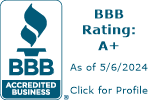Intellectual Property Protection FAQs
What is Intellectual Property?
It is imagination made real. It is ownership of a dream, an idea, an improvement, an emotion that we can touch, see, hear, and feel. It is an asset just like your home, your car, or your bank account. Just like other property needs to be protected, so does intellectual property, and that is in the form of a patent.
What is a Patent?
A patent is a type of property right. It gives the patent holder the right, for a limited time, to exclude others from making, using, or selling the product that is patented. Any person who invents or discovers any new useful process, machine, manufacture, or composition of matter, or any new and useful improvement thereof may obtain a patent. A patent cannot be obtained upon a mere idea, suggestion, or service related item. There are several types of patents:
- Utility Patents
- Design Patents
- Plant Patents
- Provisional Application for Patents
- International Patent Applications
Who May Apply for a Patent?
The patent laws of the United States make no discrimination with respect to citizenship of the inventor. Any inventor, regardless of his/her citizenship may apply for a patent. If two or more persons make an invention jointly, they apply for a patent as joint inventors. A person who makes a financial contribution is not a joint inventor and cannot be joined in the application.
What Do the Terms Patent Pending
or Patent Applied For
Mean?
They are terms used by a manufacturer, seller, inventor, or other owner of the rights to the product to inform the public that an application for patent on that product is on file with the USPTO. The law imposes a fine on those who use the terms falsely to deceive the public.
Do I need a patent attorney or can I do this on my own?
The preparation of an application for patent and the conducting of the proceedings in the USPTO to obtain a patent requires the knowledge of patent law and rules and USPTO practices and procedures, as well as knowledge in the scientific or technical matters involved in the invention. Inventors may prepare their own application and file them at the USPTO themselves. However, unless they are completely familiar with these matters, they may find considerable difficulty in obtaining their patent. It is strongly suggested that a registered patent attorney/agent prepare all the required patent documents and proceedings before the USPTO.
What is a patent search?
It is simply a search of the files of the USPTO of issued patents. It helps the inventor learn what patents may already exist that are similar to or exactly like their own.



